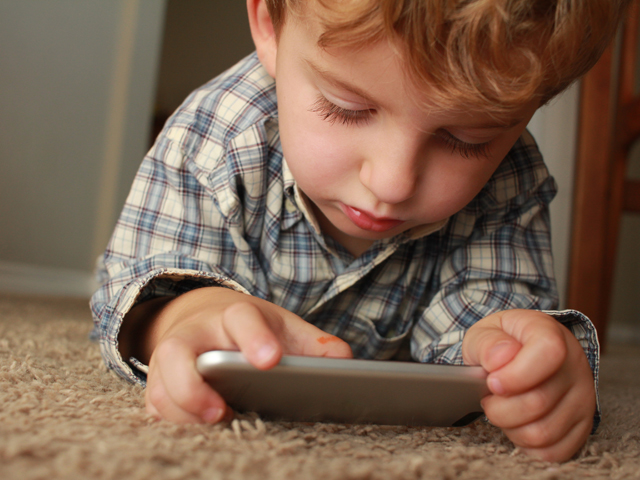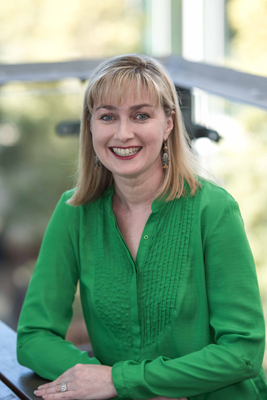Tammy Anson Privacy and Child Safety Interview

15 years of Facebook
This year marks 15 years of Facebook, and more than ever the name 'facebook' has been connected to the word 'privacy' and concerns about what it means for children.
Interview with Tammy Anson, Communications Officer at pixevety
Tammy Anson is a mum and the Communications Officer at child image protection and photo storage solution, pixevety. pixevety is an easy-to-use online platform that offers a hassle-free solution to reduce the daily stress and privacy pitfalls of managing and sharing photos and videos of children. pixevety is simple, safe, smart and secure https://pixevety.com/
Question: What are some of your major concerns surrounding a child's safety, online?
Tammy Anson: Children are extremely vulnerable – full stop. The majority of our kids these days are now more vulnerable online than off. My fear is that parents generally are giving children access to adult-targeted or exposed tools and content online without any guidance or supervision. It's like giving them keys to your car with no training or instruction, except to say "here's the steering wheel, there's the pedals, now go!".
You also wouldn't give a stranger in the street all your child's information, but we can unintentionally do this when we share photos of our children online. Information such as their name, date of birth (birth announcements and birthday photos shared on the exact date of birth), location (e.g. school uniforms in photos that show where your child can be found during school hours), and even home address can be determined from photos if you aren't careful.
The online world is young compared to our physical one and needs more protection, control and choice.
Once you've shared personal information online that can end up being used as a digital passport to your child's world - using channels like social media, it is out there forever for anyone to see for their own use. Once the images are published, you can quickly lose control over who has access to them.
We've all heard about the harmful effects and results of what can happen online to kids (such as online child abuse, identity theft, sexting and cyberbullying) it can also affect their future when they end up becoming adults. For example, it could affect their chances of going to university, getting a job or even simple but important activities like getting a bank account or life insurance as is already happening in New York.
These are major online concerns for our kids, and is the reason why my husband and I have given ourselves to this cause – to give parents control and choice about how photos of their children are used.
Question: What do you see as the biggest online risks, this year?
Tammy Anson: As part of my job (and personal interest), I try and scan the press daily to ensure I am across what is happening in the online world and, in particular, the privacy of children, especially when attending school. The latest "trend" I see growing – sadly – is children and teenagers who use social media being coaxed and even threatened into sharing photos and personal information online. They are then manipulated into doing despicable acts until a trusted adult or friend intervenes. The law is still catching up on this one and that is a problem that needs immediate fixing.
Therefore, I see parents who fail to monitor their child's online behaviour as the biggest risk right now. We cannot expect big companies with commercial interests in children to do it on our behalf, and our regulators and laws are not yet strong or sophisticated enough to tackle this problem head on - yet. If we continue to do the same as we've done since social media came on the scene, we are seriously doing a disservice to our children and clearly not protecting them.
Question: How can we protect our children whilst still using Facebook, as a parent?
Tammy Anson: I think there needs to be a balance between giving kids enough independence to explore what it's like to be a good digital citizen – like learning to drive a car – but not open up pandora's box completely until they are ready. As a parent, we generally have a gut feel about when we know our kids are ready. I see it as a simple exercise of replicating our offline behaviours online.
Make them aware of why you use Facebook, how you use it, and what you don't do - lead by example. When you feel your child is ready to have their own profile on Facebook (not when Facebook or friends say they should, but when you say they should) sit down with your child and let them know what a big responsibility this will be and how proud you are that you feel they are ready.
Set some impenetrable boundaries on what they can share via this channel, who they can connect with (obviously include yourself) and who they should not. Set up their privacy settings with them, and then sign a contract together outlining what you've discussed to make it feel like a real family commitment and suggest reviewing the contract regularly. As our parents told us, remind your child you paid for this experience (be it via the mobile phone or internet they use) and you can take it away! I came across a contract from the Carly Ryan Foundation which I have adapted and used with my own child.
 Question: What types of things do parents need to be conscious of when posting images of their children, online?
Question: What types of things do parents need to be conscious of when posting images of their children, online?
Tammy Anson: This activity is dubbed "sharenting". Australian leading psychologist – Dr Michael Carr-Greg – recently shared 5 tips for sharenting. They are:
Don't share photos and videos that contain personal details, such as full names, personal contact information, or uniforms that identify location
Never add comments to photos that identify locations; for example street address, school name, or even identifying features in front of your home.
Only ever share with people who you really know and trust. Rather than posting to all of your friends on social media, be selective and use the privacy settings on your social media platform. Also, be aware that if one of your friends likes your picture, it may also become visible to their friends.
Ensure that you have checked with other parents before posting and sharing images that include their children.
Be mindful of metadata " most digital photos contain information about the time, date and GPS coordinates of where the photo was taken.
I'll add 3 more tips to this list:
Find and regularly use a simple photo management tool that helps you filter content and cares about protecting your privacy. Our platform, pixevety, is uniquely designed to help capture your consent and the consent of others, communicate consent wishes and filter photos based on those consents before sharing. Families can easily sign up to a free basic plan with no strings attached! Our mission is to protect the digital image footprint of Australian children.
Carefully select the photos you share (i.e. no full-frontal face shots, no swimwear, obviously no nudity) as everything posted online is saved in cache files that are stored all over the world – once you upload photos online you lose any control over them.
Only post low-resolution photos and make sure they're resized to web-quality, so no one can tamper with them.
If photos are already posted, it's impossible to get Facebook or Instagram to simply take them down, let alone delete them. Here are some suggestions on how to approach the people who posted:
Simply ask them to remove it, or at least hide your child's face
If they want to keep the photo online and are happy to edit out your child's face, ask them not to tag your child's name or share location data
Finally, you can always suggest another channel such as a private photo-sharing platform (like pixevety) that allows them to easily and safely share with friends & family
Question: How can we protect and educate our children from cybercrime?
Tammy Anson: Talking about our own cybercrime experiences (if you have any) or experiences of friends and family is always the best way to start a serious conversation like this with your child. Those stories that are close to home always makes a situation feel calmer and more immediate. There are also so many websites and documentaries out there on this topic you can utilise – like the ABCs Behind the News Cybercrime video or eSafety website – seeing a visual story might also be a better way to educate a child than sharing articles or reading books. Sitting down and watching a show together also provides a great opportunity to answer any questions your kids have there and then.
Question: Is it possible to protect children in the digital world, without sheltering them?
Tammy Anson: Yes, of course, but only if we start treating the digital world as an extension of the real world and stop relying on it so much to protect its citizens. On top of this, the online world does not generally have the right levels of laws and protections in place which make it riskier or, if there are authorities, they are poorly resourced to deal with demand. For now, there are basic rules, etiquettes and behaviours that the general population in the physical world adhere to. Ensure your child mimics those behaviours online, check their settings and set them to strict, and encourage them not to hide behind pseudonyms – let them be themselves.
Beyond this, defining and communicating key boundaries that your child/family can and should follow, is the best way to protect them in the long-term.
Question: At what age do you suggest parents allow their children to have online profiles whether on Facebook or Instagram?
Tammy Anson: Firstly, check the legal age in your country and stick to that initial goal post. In Australia, the age of digital consent is 13, in many other countries it is 16. After that point, for a parent to make the final decision, they should take into account the individual development and maturity of their child. We all know each child is different. Combined with this is determining if you – as a parent – have spent enough time educating your child on how to be a good digital citizen.
Personally, my husband and I have decided the age of 15 sounds about right for our child as this is the age that in the real world, we were given more adult-level responsibilities like getting a casual job. For us as kids, we had enough life experiences at that age to understand the difference between right and wrong, and what behaviours should be questioned.
Interview by Brooke Hunter
Photo by Hal Gatewood on Unsplash
MORE



